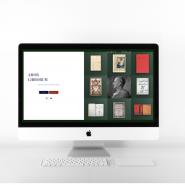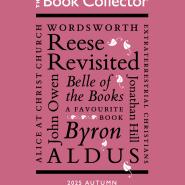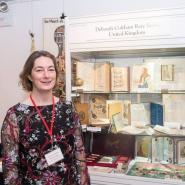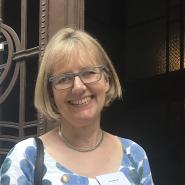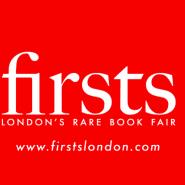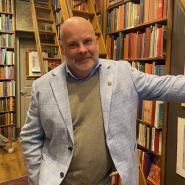ILAB: A Timeline
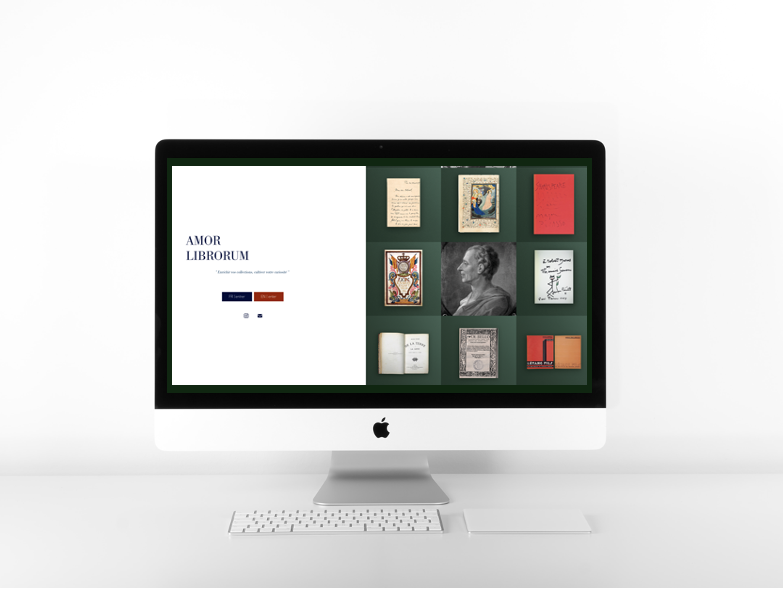
" Enrichir vos collections, cultiver votre curiosité " French booksellers association launches new websites
"Enrich your collections, cultivate your curiosity” has been the motto of recent virtual book fairs, hosted by the French antiquarian booksellers association.
The pandemic brought much upheaval to the rare book trade worldwide and amongst other international fairs, the Paris Salon du Livre in April 2020 was cancelled. However, the board of SLAM reacted immediately and launched already in those early days in April 2020 a digital version of the Salon. An idea was born!
Virtual book fairs were developed in the course of 2020 and even a physical fair could be held at the Grand Palais in September 2020 under strictest hygienic measures.
The 2021 edition of the Salon du Livre Rare & des Experts en Objets d'art is now scheduled to take place in September 2021 at a new venue. This change of location is not linked to the pandemic but renovations in the Grand Palais which had been planned by the City of Paris for several years pre-COVID.
SLAM has found an excellent alternative, the Grand Palais Éphémère, an exceptional temporary conference venue, purpose-built on the Champ de Mars just below the Eiffel Tower. All information about the fairs and the association can be found on the Salon website, one of the sites which went live only a few days ago: https://salondulivrerare.com/
A second site: www.amorlibrorum.fr, adopting the motto of the International League of Antiquarian Booksellers (ILAB), leads to the virtual rare book fairs organised by SLAM of which one event starts today: The monthly "E-Rendez-Vous”. Every 3rd of the month, this fair allows dealers to display 3 books for 3 days. Speed-dating for bibliophiles!
This new concept was launched by SLAM in February 2021. The fifth session starts today, with a growing success. Nearly 180 booksellers have opened an account since February and take turns each month, with an average of 90 exhibitors present. More than a third of the exhibitors are international booksellers from beyond the French borders. The bilingual site receives nearly 40% foreign visitors!
"It is a real satisfaction to be able to keep this contact, every month, not only with the visitors from France and the whole world, but also with all the colleagues. All of them have made great efforts to adapt to these new methods, and I would like to thank them and congratulate them. And they are rewarded: the percentage of books sold improves fair after fair, and since February and with the two e-salons of December and May, more than 500 books have been sold. 'Amor Librorum' is not a vain maxim but a link that survives, even if it is by internet!", says Hervé Valentin, President of SLAM.
For more information about the SLAM, the Syndicat National de la Librairie Ancienne et Moderne, please click HERE or contact the SLAM Office if you wish to exhibit at any of the upcoming events or have questions about buying at a virtual fair.
Enrichez vos collections! Cultivez votre curiosité!

"A collection can grow and change with the times and, above all, always be the occasion and starting point for new interpretations."
Elisabeth Wittkowski (born 1998) wins Young Collectors' Award 2022 for Elton John Collection: "Self-Representation and Reception 1970-72".
On 21 February 2022, during this year's Stuttgart Rare Book Fair, Ms Elisabeth Wittkowski will receive the first prize of the 2022 Young Collector's Award with an endowment of EUR1000 by the German Antiquarian Booksellers' Association.
Link to register for the online prize giving ceremony, please GO HERE
The interest in developing and curating a collection, but also the enjoyment of the objects and collection areas, transcends generations. On the occasion of the 2022 Stuttgart Rare Book Fair, the German Antiquarian Booksellers' Association called for applications for a second time, since the inaugural award in 2020. The applicants, no older than 35, were asked to give an overview of their collection but also to describe their motives.
The jury chose Elisabeth Wittkowski's creative and convincing work on "Self-Representation and Reception" of Elton John in the early 1970s from among the diverse entries. On the one hand, the artist fascinates in his constant development, but the collection often shows another person behind the generally visible stage persona. Authentic representation versus media distortions of reality but also the multimedia nature of Elton John's reception reflect both the collecting theme and everyday cultural processes of the early 1970s.
"And they do collect! This, or similar, is how one might paraphrase a well-known quote. The applications for the 2022 Young Collector's Award, which is being offered for the second time, have shown that the hunt for books, as objects of desire, is unbroken and age-independent. Only the search, the possibilities of acquisition and the contents of the collectibles differ and often have a stronger connection to the present. It is always a pleasure to be able to experience and feel the enthusiasm of young people for printed matter in any form." Sibylle Wieduwilt, Chairwoman of the German Antiquarian Booksellers' Association and member of the jury.
All images below were supplied by E. Wittkowski.
The Stuttgart Rare Book Fair runs 18 - 22 February 2022
Link to virtual fair: VIRTUAL STUTTGART RARE BOOK FAIR 2022
As a result of the COVID pandemic, the German Antiquarian Booksellers' Association (Verband Deutscher Antiquare) developed a virtual fair platform in 2021, which in 2022 will once again give rare booksellers from Germany and abroad the opportunity to present their stock while in-person fairs and events are not yet allowed in Germany.
In 2022, the German Antiquarian Booksellers' Association welcomes 73 antiquarian bookshops and galleries from Germany, Austria and Switzerland, the Netherlands, France, England and the US.
All exhibitors are listed here.
Stuttgart Fair Catalogue
The Stuttgart fair catalogue is now published and can be ordered by email from the Association's office.
An electronic version is available FOR DOWNLOAD HERE
Virtual Stuttgart Rare Book Fair 2022 opens 18 February at 12 noon German time
The virtual Stuttgart Rare Book Fair 2022 will go live on 18 February 2022 at 12 noon German time and closes on 22 February 2022 at midnight.
73 German and international antiquarian booksellers and galleries will exhibit up to 20 additional objects each. The virtual fair does not handle direct sales; sales are made directly through the dealer.
You can reach the virtual fair via ff. link: VIRTUAL STUTTGART RARE BOOK FAIR 2022

"A large part of the bookseller’s job is seeing something significant in a book which others had missed, ..."
In its recent edition, The Book Collector invited two booksellers, Angus O’Neill and Brian Lake, together with auctioneer Matthew Haley, to revisit a landmark series of essays on the book trade written by the late Bill Reese in 2000.
We are pleased to share Angus O’Neill’s thoughtful contribution, published in the Autumn 2025 issue. In his essay, Angus reflects on how the trade has evolved over the past half-century — from the impact of the internet on rarity and pricing, to evolving tastes, provenance research, and the reappearance of younger collectors. He also considers the challenges and opportunities posed by AI, and reaffirms the enduring value of the bookseller’s eye and expertise.
ANGUS O’NEILL - Proprietor, Omega Bookshop, trading independently since 1984.
When the late, lamented Bill Reese wrote his article ‘The Rare Book Market Today’ in April 2000, the trade in rare books had changed more in the previous twenty-five years than in the five centuries beforehand. This was largely due to the internet, of course: the most immediate change (among others, which I shall mention) was that our received ideas of rarity and availability had gone out of the window in just a few years. A typical art reference book, fought over at £85 in the 1990s, now languishes on the outside shelves at £5; as an undergraduate student in 1982, I sold a rather worn ‘uncorrected proof ’ (really, as we all know, a publisher’s rep’s advance reading copy) of John Fowles’s The French Lieutenant’s Woman (London: Jonathan Cape, 1969) for a gratifying £300 – about five weeks’ student grant, if anyone still remembers such things. I would be delighted to get that price for it now.
Another change is that people buy so much over the internet. Even though books might have seemed a perfect commodity for this, online trading still got off to a shaky start, as many of the kitchen-table booksellers didn’t understand the importance of condition, and thought bibliographical references (if they used them at all) were a kind of tinsel, as opposed to a valuable aid in describing their copy; but the market has settled down, and consumer legislation has removed a few of the pitfalls. There is of course nothing better than seeing a book (and talking to a bookseller face to face), but detailed images have turned out to be quite a good substitute for much of the jargon (‘nf in sl fr d/w’) that we grew up with.
By coincidence, my own experience of the book trade spans exactly fifty years: in 1975, a solitary outcast from boarding school, I enjoyed a holiday job in Ken Swift’s charming, rambling shop in Oxford’s Cowley Road. (This time-honoured way of entering the trade seems to have largely vanished, replaced by internships for the already well-connected, or by nothing at all.) Most of the stock was ordinary secondhand material, although it was in good condition and there was no rubbish. I remember a few highlights: Katherine Mansfield’s The Garden Party, illustrated by Marie Laurencin (London: The Verona Press, ‘1939’ [but 1947]), then a little way into three figures, roughly where it is now after a brief, Japan-inspired foray into four-figure territory in the late eighties (there is an auction record of £3,850 in 1989!); a very nearly perfect Lord of the Rings, sold for either £300 or £350 (a few years later, an immaculate Hobbit struggled to break free from a local auction at £400). But the shop offered a good grounding in decent, literate stock, territory in which I have ploughed a sometimes lonely furrow ever since. Since that time, I’ve worked for a ‘big firm’ (for eighteen months, as a secretary), issued catalogues, done a few fairs, owned a shop in Cecil Court in London, and carried a lot of books for many miles (although travel is more of a luxury than it once was, and the days of covering a long trip’s expenses in the first shop I visited are but a distant memory). I’ve never run an auction, nor employed large numbers of staff and it will be clear that I write from a very British perspective, but I still have time to go out buying, and to research what I find. Those are the aspects of the trade which have always appealed to me the most.
One unexpected development, which started in around 2000, was that my customers began to be born again. Not in any religious sense: but, along with many colleagues, I have noticed that nearly
all my customers today are under twenty-five or over fifty. What happened to the generation between those two? A combination of things, I suppose: the birth of the ‘digital native’ (all those solemn youngsters who so confidently asserted that the book was ‘dead’); the touching conviction that texts would somehow become free and remain incorruptible; or perhaps just lack of space and money. But all that has changed. It could be the equivalent of ‘vinyl syndrome’, in which consumers recognise that high-end audio equipment actually gives better results than a stream of digital signals; it could be the heightened awareness that information can be meddled with, hidden behind a paywall or deleted altogether; or perhaps a new generation has just discovered how beautiful and evocative the printed book can be as a physical object. Possibly the 25–50 age range is just too busy earning a living, but that never stopped bibliophiles before. Anyway, whatever the cause, all these young people are very welcome.
Tastes have changed, too. The days when even the neatest inscription was seen as a blemish are largely over, even in the more obsessive corners of the modern first edition market. I remember encountering resistance when I suggested in around 1990 that the ownership signature of the writer John Brophy did no harm to my first edition of Animal Farm. This sea change is directly down to pioneering books such as David Pearson’s Provenance Research in Book History (revised edition, 2019), but the internet is also indirectly responsible, in that when we seek information on the earlier owners of books, we are no longer confined to ODNB, the Peerage or sheer serendipity. Suddenly an entirely new cast of characters has been summoned up from the shades, and we are better off as a result: although, as usual, a little restraint in interpretation might not come amiss. Not all early owners were especially interesting, and sometimes a plethora of facts may make us (as F. E. Smith may or may not have said) ‘none the wiser, just better informed’. I remember a leading auctioneer offering a recent first edition children’s book (probably a Harry Potter) with the pompous subheading, ‘provenance: contemporary gift inscription, in mauve felt-tip pen, “Suzie with love from Nana”.’ Not much help if we don’t know who Suzie or Nana were, and I struggle to equate this with, say, John Singer Sargent’s copy (complete with Galignani book-ticket) of an early novel by Henry James.
Provenance is exciting but it can have a downside, like most positive discoveries when they fall into the wrong hands. The laudable determination of institutional libraries not to possess anything stolen or looted can sometimes lead to disproportionate concern, as when their buyers insist on a comprehensive paper trail of ownership. It is very rare to find an old book with a complete and unbroken chain of provenance: indeed, were one to acquire a book complete with its 17th-century purchase invoice from the Leipzig book fair, and a collage of noble bookplates from then to the present day, there would be a strong case for considering it part of German cultural heritage and thus blocked from export, even for the most forceful bookseller. Books are multiples, and they were made to travel – Anton Koberger, the publisher of the Nuremberg Liber chronicarum in 1493, had offices all through Europe from Lyon to Buda. But the bookseller’s duty is to persuade rather than to complain, and there are signs that increasingly productive dialogue between libraries and the trade is leading to a more satisfactory approach to this problem. Finally, on this topic, it should be stated unequivocally that the great majority of antiquarian booksellers are implacably opposed to the legal fictions which some jurisdictions apply to the acquisition of clear title, when recognisably stolen books are sold at auction: this is an anomaly which we would love to see abolished. ILAB is working on it, but it will take a while.
Some of the trends which Bill Reese pointed out twenty-five years ago have continued to develop: the rise of the private collector, for instance. The completist has largely given way to the acquirer of high spots. Decent copies of Evelyn Waugh’s Brideshead Revisited (the first trade edition, London: Chapman and Hall, 1945) have gone in twenty-five years from high hundreds to high thousands, while the artificial rarity Basil Seal Rides Again (London: Chapman and Hall, 1963) remains stuck in the low hundreds (£188 for a lucky vendor at a Bloomsbury auction in 2004, £240 at Dominic Winter’s in 2023). Oddly, the true first of Brideshead, one of the fifty in wrappers ‘issued privately for the author’s friends’, has not fared so well: a copy fetched £2,530 in 1994, while another made a disappointing £8,960 thirty years later: perhaps its very scarcity is oV-putting. As any art dealer will tell you, there’s no point in making a market in something you can’t find. I should add that auction records are not the only price data out there, but they are relatively easy to obtain and are useful if interpreted with caution and a little cynicism: the successes are reported more conscientiously than the failures.
Good ordinary books are getting harder to sell, while highlights are ever more sought after. In 2000 and 2010, I inadvertently conducted a controlled experiment on this thesis: asked to clear eighty boxes of randomly packed books from a deceased estate, I found that the heir’s circumstances made it impossible for me to take more than forty on the first visit, and I was pleasantly surprised when a nearly forgotten number popped up on my telephone a decade later. Of the first forty boxes, thirty had to be sold wholesale for very little: the remaining ten were worth £8,000. The second time around, thirty-six boxes bit the dust, while the last four stacked up to £20,000, plus one book which even then seemed to have a way to go, and which I still have: perhaps another £20,000 for that?
The Mittelstand of the trade, the old-fashioned holistic market town shop that could find a home for every worthwhile book, is now a rarity, surviving only when it is in the happy position of owning its own freehold. There are glorious exceptions (G. David in Cambridge, for instance), but only a very few. Most of the valuable business is in the hands of a small number of firms, and there seems a lot less social mobility than there was a couple of generations ago; and, alas, that is not confined to the rare book trade.
Printing and the Mind of Man books (still a key text for the highlight collector) go from strength to strength, buoyed up in some instances by personality cults: the Darwin market, for instance, is perhaps worth a glance, as the high spots appear to have gone up roughly tenfold since 2000. An acceptable-sounding copy of On the Origin of Species (London: John Murray, 1859) fetched £19,550 against an estimate of £7,000–£9,000 at Sotheby’s in 2000, while Forum sold a rough-looking one this year for £98,280, and leaves from the original MS (used by generations of Darwin children as scrap paper) have blossomed from US$96,000 in 1999 (an ‘important leaf ’, estimated at $25,000–$35,000) to £274,000 and £490,000 in 2018. No wonder Cambridge University Library is relieved to have its notebooks back.
What next? Inevitably, the question of artificial intelligence needs to be addressed. To approach this, as an avowed sceptic, I tried to recall the details of a half-remembered remark by Aldous Huxley to the effect that ‘military intelligence bears the same relation to intelligence as military music does to music’, and so, in a vain attempt to check my memory and obtain chapter and verse, I turned to Google. The result was more telling than I expected. The ‘AI overview’, which heads the search results, begins as follows: ‘The connection between Aldous Huxley, military intelligence, and music is multifaceted. Aldous Huxley’s dystopian novel, Brave New World, has been a source of inspiration for musicians, including Iron Maiden, who created the song “Brave New World” based on the book’s themes of societal control and artificial intelligence…’ What a fine, ten-dollar word ‘multifaceted’ is! And how kind of Googleto throw in a disclaimer at the end of this word salad, stating baldly that ‘AI responses may include mistakes’. You don’t say! Lessons have been learned, as they say nowadays.
Seriously, however, a close colleague very nearly fell foul of AI, when a prospective customer asked Google what a book in his stock was worth. The title in question was William Wollaston’s The
religion of nature delineated (London: Samuel Palmer…, 1725). First printed in 1722, the work went through several editions, and one of the 1725 reprints is noteworthy for having been set in type by an argumentative American teenager, the young Benjamin Franklin: therein, of course, lies much of its value. AI completely failed to spot this: it came up with a predictably half-smart summary of online prices and auction records, suggesting a price in the mid-hundreds of dollars, not unreasonable for other editions of the book (which is more interesting than it might sound), but wholly missing the Franklin factor. I am happy to report that another customer came along, one who was willing to engage his brain rather than his keyboard, and the book sold, but it was an awkward moment and AI will only get cleverer, or at least more plausible. Cataloguing and pricing are major elements of a dealer’s skillset, but we will not have a monopoly on them for ever. Two decades ago, I was able to fool a search engine by asking ‘Who wrote Handel’s Water Music?’, but such a trick would be harder now. Nonetheless, a large part of the bookseller’s job is seeing something significant in a book which others had missed, and this seems likely to remain the case for many years to come. That’s how we buy from other dealers!
I write this in a hotel room, overlooking a railway station (shrine to a technological marvel, still working after 200 years) and a newish postmodern office block (five floors, all empty: if you don’t have to go anywhere, or come from anywhere, you don’t need to be next to the station). Today’s (and tomorrow’s) customers for rare books (another technological marvel, 570 years and counting) can buy stuff online, but they can also walk into a shop and find shelves of interesting material, all written and illustrated by real people, and historically coherent: a very modest amount of skill is enough to ascertain that the artefact hasn’t been tampered with or rewritten to please the morals of today (which will pass, as they always do). These objects sit there, waiting to be interrogated, to testify to the ineradicable human longing for wisdom and enquiry, waiting for us to apply our own imaginations to those which created them. Why would anyone feel pessimistic when books can help us make sense of our baffling world?
This article was first published in the 2025 Autumn issue of The Book Collector and is reposted here with the permission of the publisher. To read or subscribe, please visit: https://www.thebookcollector.c...
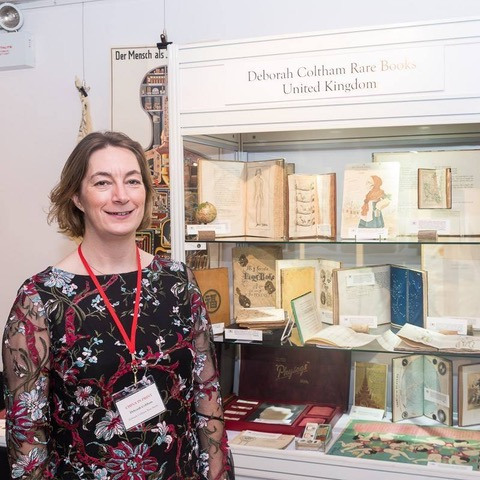
"As a trade association, we have a wealth of knowledge and experience amongst our members that is second to none"
Well-known bookseller and highly engaged supporter of the trade, Deborah Coltham will now steer the ship for the ABA for the coming two years.
After graduating from St Andrews University in 1994 with an MA in English Literature and Medieval History, Deborah joined Pickering & Chatto Ltd as an apprentice to the Head of the Science and Medicine Department, subsequently taking over the role in 1998. She established Deborah Coltham Rare Books in July 2006 and continues to specialise in a wide range of scientific and medical subjects, with books by or about women being a particular area of interest. She has worked closely with major libraries, institutions and individual collectors both in the UK and worldwide. Deborah has been part of the ABA National Council since 2017, for many years in the role of Membership Secretary and Vice-President. Besides her role as president of the ABA, Deborah organises and sits on the judging panel of the ABA National Book Collecting Prize, and is a faculty member of the annual York Annual Antiquarian Book Seminar.
In September 2022, Deborah played a key role in running our very successful 2nd ILAB Symposium at the Bodleian Library's Weston Library, moderating the event.
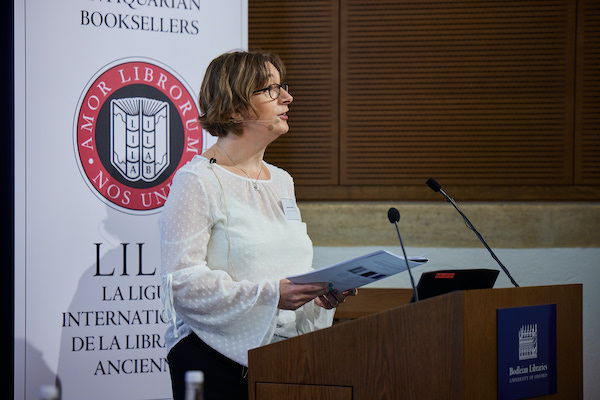
In a recent letter to members, Deborah looks back at the past few - stormy - years, when the book trade had to weather the unprecedented pandemic and many changes and challenges resulting from it.
It is with immense pride that I write to you in my new capacity as ABA President, having been elected to take over the role from Pom Harrington at the AGM last Wednesday. I am delighted that Bernard Shapiro was duly elected as Vice President, and that Daniel Crouch was happy to remain in post as Treasurer.
I am fortunate to be taking over the role in much calmer waters than in 2021. Pom has worked tirelessly on behalf of the ABA, not only during his Presidency, but for many years, and the trade as a whole has benefitted enormously from his forward thinking, dedication and dynamism. Thank you, Pom, for all that you have done, and all that you will no doubt continue to do on behalf of the rare book trade, and more formally in your role as the Chair of Firsts London. I have a hard act to follow!
Thanks too, must go to Daniel, whose fiscal prudence, and the triumphant ILAB Congress, means that we find ourselves in a more stable position than for some time. Especial thanks to Riley Grant: the number of personal tributes paid to her within the recent annual reports is a clear testament to how much we all rely on her, and the excellent job she does on our behalf as the first point of call for the Association.
May I also take the opportunity to thank Roger Treglown, who has stepped down from Council. First elected in 2000, he has taken on a number of roles, culminating in his Presidency from 2019-2021. The pandemic made for a challengingly two years and denied him an official hand-over to Pom, and so it was good that we could offer him our thanks and appreciation in person last Wednesday. Angus O’Neill is also stepping away from his advisory role on the Management Committee after several years. Recently elected as Vice President of ILAB, alongside Christopher Bailey as ILAB Treasurer, their roles ensure that the ABA will retain its prominent position internationally.
As a trade association, we have a wealth of knowledge and experience amongst our members that is second to none, and which forms the bedrock of the Association. We have a growing number of dealers setting out on their own, or gaining experience in established firms, and who bring with them new ideas and ways of connecting with customers. A number of those entering the Association are graduates of YABS, the brainchild of Anthony Smithson and Alice Laverty of Keel Row Books, with fellow director Jonathan Kearns. Now under the aegis of the ABA Educational Trust, I am sure that it will no doubt continue to prove to be an invaluable conduit for potential new members of the future.
Turning to book fairs, which are so vital and important to many of us, thanks to all who exhibited at Edinburgh. As always, it was pleasure to visit, albeit fleetingly, and it was good to see a steady stream of visitors, and the number of younger collectors in evidence which was encouraging to see. ...
So many members quietly work behind the scenes to help promote the Association, for which many thanks. It does not go unnoticed if perhaps not always trumpeted.
We have many wise heads and smart business brains sitting on Council, who represent the many facets of the book trade from several parts of the country, including sole traders working from home, smaller independent shop owners, long-established family firms, and larger, globally recognised companies. All care passionately about our trade and are extremely active and motivated. I may be the visible spokesperson for the next two years, but it is very much a collective effort, and we are all looking forward to the months ahead.
Deborah Coltham
ABA President
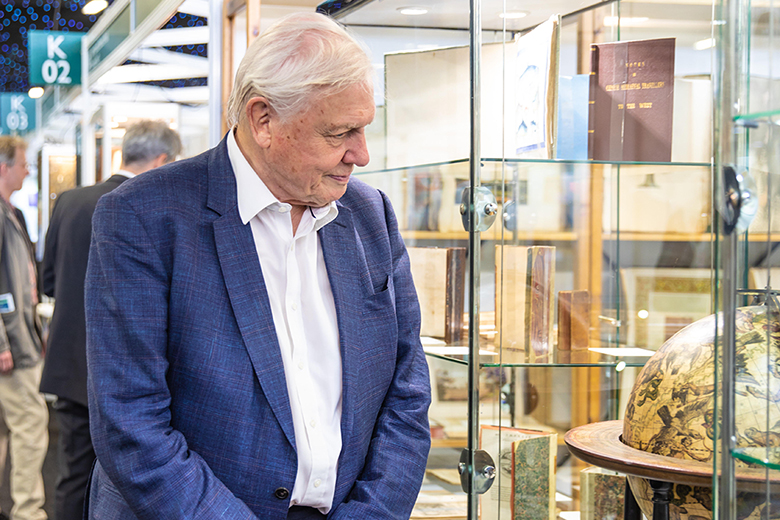
"Bibliomaniacs in Battersea" - The Times Literary Supplement writes of the London Rare Book Fair
When the fair first started in 1957, Attenborough was abroad filming along the Great Barrier Reef; this year he is cutting the tape, officially opening the event’s sixty-first outing. He is, as he put it, “unabashedly a collector”; he bought his first rare book when he was fifteen. It was On the Origin of Species, naturally – not the first edition but the sixth, in which Darwin introduced the word “evolution”.
To a collector, the specifics of different editions matter deeply, far more than they do to the general reader. They are an important element in the complex of features that determine how well a book fits one’s collection, how badly one wants it. Walter Benjamin observed that “the period, the region, the craftsmanship, the former ownership – for a true collector the whole background of an item adds up to a magic encyclopedia”. As Attenborough notes wryly, one doesn’t necessarily collect books in order to read them.
This year the fair takes place in an exhibition centre in the middle of Battersea Park. It is vast. A hundred and eighty bookdealers have set up stalls, transporting their wares from Vienna, Vancouver, Sydney, San Francisco, among other places. These include your straightforward high-end treasures: an exquisite hand-coloured first edition of Vesalius, yours for £850,000; a Kelmscott Chaucer, £60,000; various early Shakespeare folios. There are also association copies: Alan Rickman’s Harry Potterbooks; one of the Thomas the Tank Engine stories signed by Ringo Starr. A fair few of the dealers specialize in modern first editions: Woolf’s Kew Gardens, set, printed and stitched by the Woolfs themselves; Joyce’s Ulysses in its Greek blue covers. It is like walking around the gallery of a major library, with the added thrill of knowing that, if you just sold one your vital organs, you might take home one of the exhibits.
>> This article was first published in the Times Literary Supplement and is reposted here with permission of the editor. View original article here.
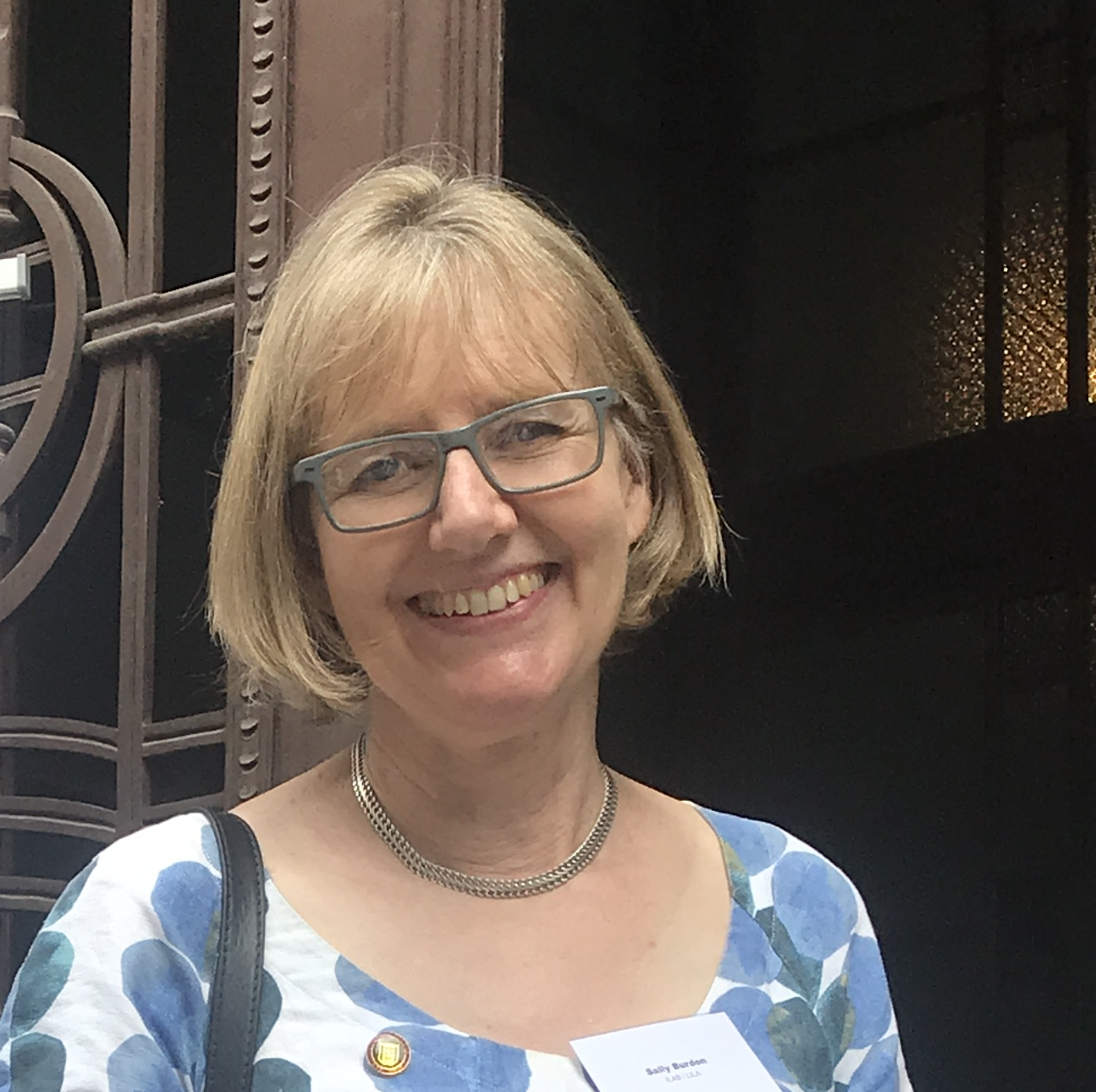
"Change is always around us, and we need to be ready as a trade to face it together."
For years Sheila Markham has been interviewing booksellers from all over the world. These interviews, well known and much loved in the trade, are some of the most interesting accounts of our trade, portraying so many fascinating personalities and backgrounds.
A few days before the opening of the Melbourne Rare Book Fair, we asked Sheila if we could share this latest interview with Sally Burdon and, of course, received a warm and positive response.
Sally Burdon shares insights from a lifelong career in the rare book trade, as well as her work with ANZAAB, the Australian and New Zealand Association of Antiquarian Booksellers, and ILAB. Fulfilling many roles, Sally Burdon has shaped ILAB over the past few years, initiating and leading many projects that will serve our community well into the future.
More bookseller interviews by Sheila Markham can be found on her website HERE
To visit the Melbourne Rare Book Fair this week, check out the fair website HERE
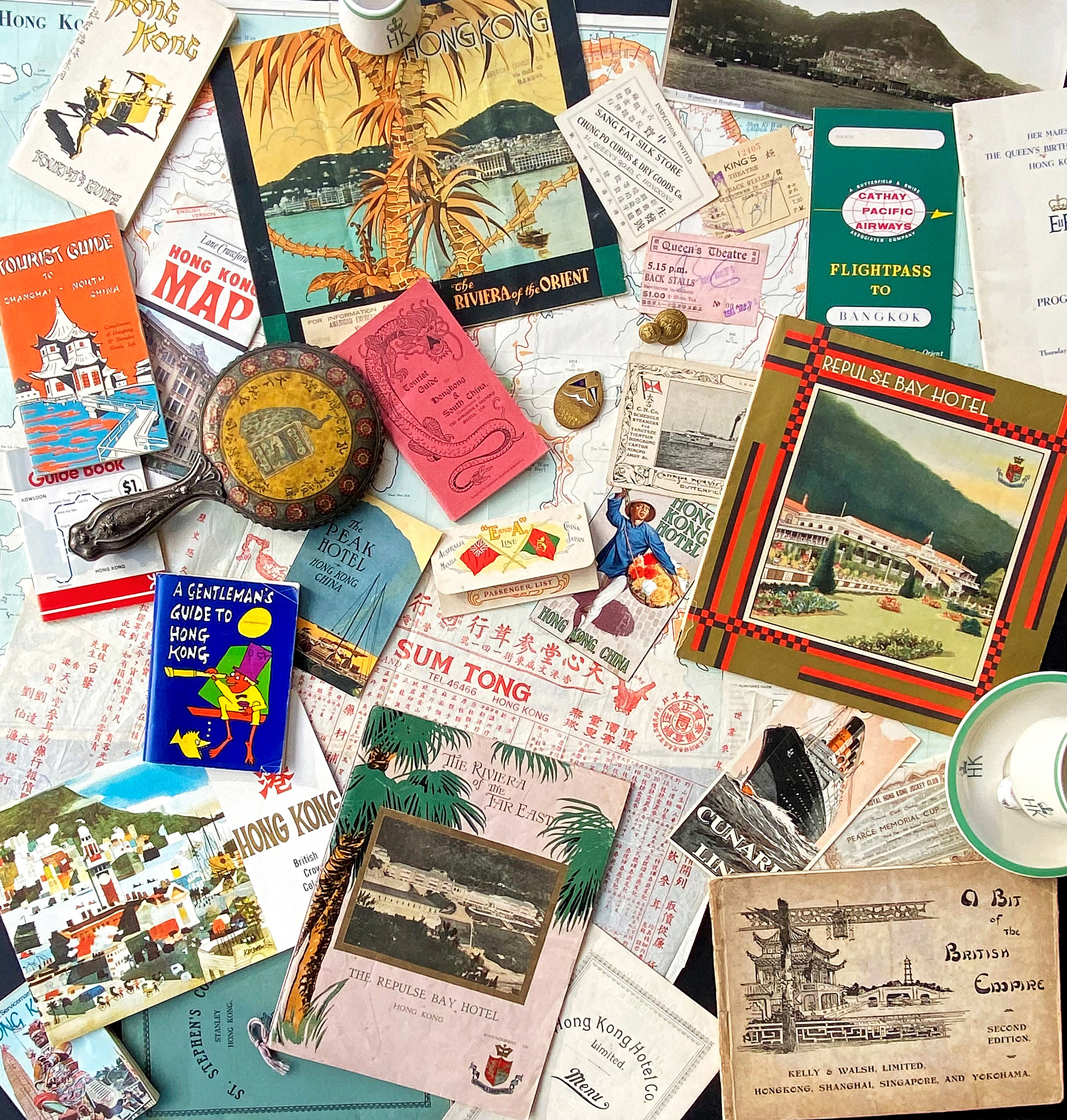
"Connecting Western dealers and Asian collectors" - Speaking to Christopher Bailey ahead of FIRSTS HONG KONG
Image above: Ephemera collection exhibited by Picture This Gallery at FIRSTS HONG KONG
After the success of the "China in Print" fair, which ran until 2018, the Antiquarian Booksellers' Association (ABA) is now relaunching the Hong Kong event under its "FIRSTS" brand.
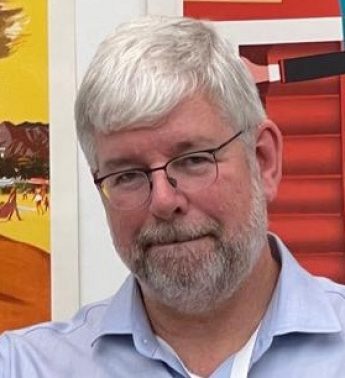
We spoke to Christopher Bailey of Picture This Gallery, who has been based in Sunningdale in the UK since 2016, after trading from Hong Kong for many years.
Christopher and his wife Pamela run an online art gallery that combines contemporary art with old and rare objects. The gallery showcases a wide range of photography by renowned international and local photographers, as well as vintage and contemporary posters, antiquarian books and maps.
Chris, you ran an art gallery in Hong Kong for many years. Could you tell us a little bit about what first drew you to Hong Kong and how your journey in the city began?
I arrived in Hong Kong all the way back in 1992 and worked in finance for 10 years. Needing a different challenge and change of lifestyle, my wife Pamela and I founded Picture This Gallery in 2002. We ran a gallery and a retail shop in Central district, offering rare books, antique maps, vintage posters and contemporary photography. It was an exciting time in the years after the Handover, we were always busy, had a lot of fun and curated some fabulous exhibitions. But after 24 years living in Hong Kong, it was time for a change of air, so we packed up in Hong Kong in 2016 and moved the business and our three teenagers back to the UK. Since then, we have refocused the business though most of our trade and major clients continue to be in the Far East.
How have you seen the book trade in Hong Kong and Asia develop over the years? Have there been any trends or changes in collecting habits that you have noticed?
The market for international books has grown steadily over the years and the Hong Kong book fair, in its various guises since 2007 has been an important part of connecting Western dealers and Asian collectors. But it is worth remembering that this stands alongside a much larger market in Asian language material which most western dealers are only tangentially involved in. Interest in Western literature, illustrated books and fine bindings have also grown and with continued exposure in these areas, I definitely expect we are seeing a deeper collector base develop around the region.
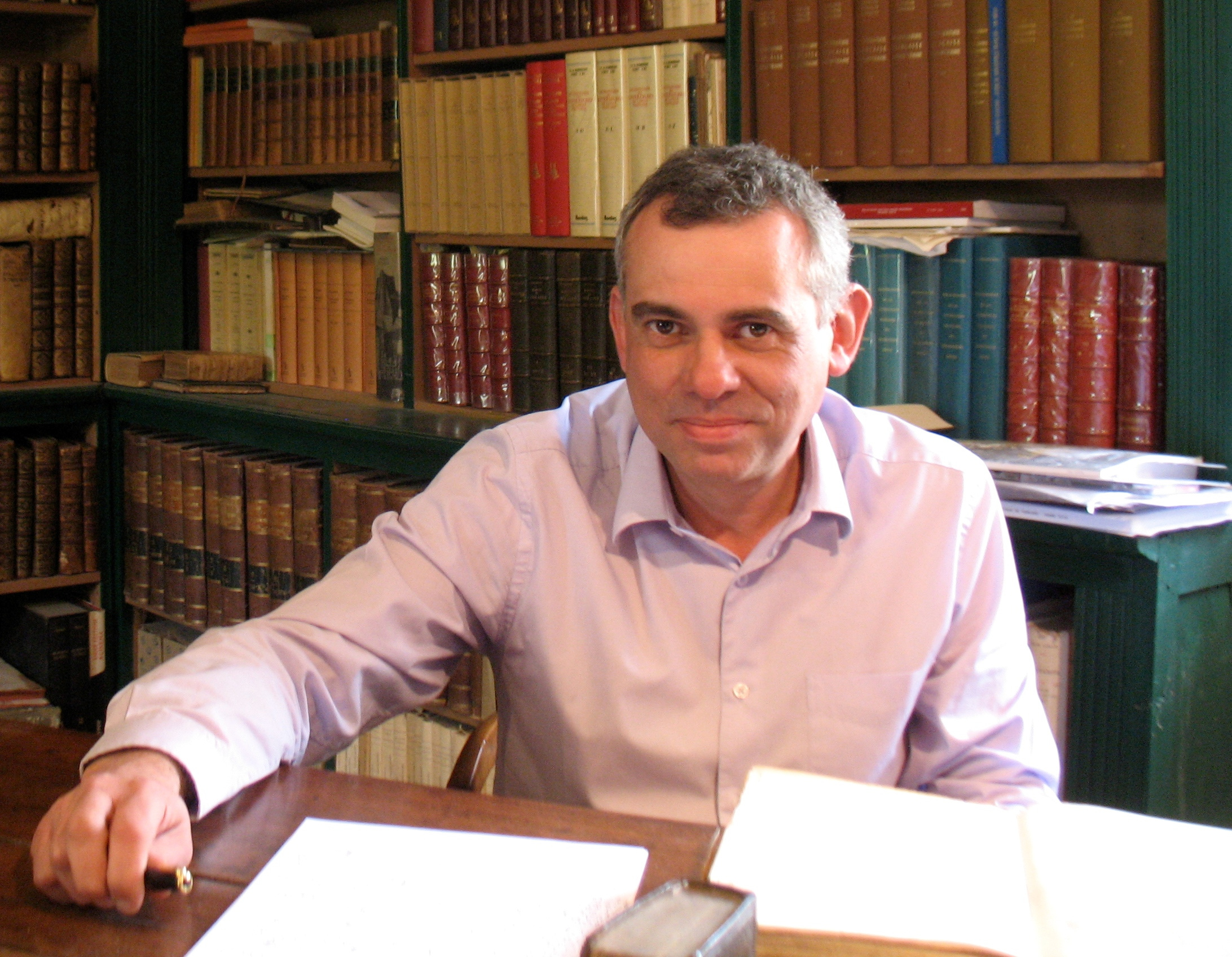
"Direct contact with books remains the best way to create new vocations"
Jean-Marc, congratulations on your appointment as President of SLAM. Please give us a little background about yourself and your background in the trade?
I was born into a family of bibliophiles and was made aware of antiquarian books from an early age. I made my first significant purchase, a 16th century edition of Dante, when I was only 15 years old, spending all my savings, and since then the passion for antiquarian books has never left me. Like many of us, I had another profession before becoming a bookseller in 1998. I was then an engineer in a large French company but my consuming passion led me to give up this career and I chose to create an antiquarian bookshop in a small village of Touraine with beautiful Renaissance houses. From the start I specialised in 16th and 17th century books, the Renaissance being for me a particularly fascinating period in terms of ideas, beautiful editions and creative bindings. Since then I have published more than 50 catalogues, all of which contain a significant proportion of works on humanism and the Renaissance.
Jean-Marc, félicitations pour votre nomination au poste de président du SLAM. Pouvez-vous nous donner un bref aperçu de vous-même et de votre parcours dans le métier ?
Je suis né dans une famille de bibliophiles et j'ai été sensibilisé dès mon plus jeune âge au livre ancien. J'ai fait mon premier achat significatif, une édition de Dante du XVIe siècle alors que je n'avais que 15 ans en dépensant toutes mes économies et depuis la passion du livre ancien ne m'a plus quittée. Comme beaucoup d'entre nous, j'ai exercé une autre profession avant de devenir libraire en 1998. J'étais alors ingénieur dans une grande entreprise française mais ma passion dévorante me conduisit à renoncer à cette carrière et je choisis alors de créer une librairie ancienne dans un petit village de Touraine aux belles maisons Renaissance. Je me spécialisai dès le début dans les ouvrages des XVIe et XVIIe siècles, la Renaissance étant pour moi une période particulièrement fascinante tant sur le plan des idées que pour la beauté des éditions et la créativité des reliures. Depuis j'ai publié plus de 50 catalogues de livres anciens qui contiennent tous une part significative d'ouvrages sur l'humanisme et la Renaissance.
The past two years were exceptional for every bookseller in the ILAB network. How would you describe the rare book trade in France coming out of the pandemic?
The last two years have been very special because of the pandemic. Some colleagues have been adversely affected by the temporary closure of their shops, but on the whole the profession has fared well. Indeed, customers did not stop buying old books, and I would even say that many of us felt an increased interest in books during this period. We are all used to selling by mail order, and even if direct sales at fairs and in shops have slowed down, mail order sales have been strong. To compensate for shop closures, we at SLAM had set up "e-Salons" which allowed our members to present two or three times a year singular works at virtual events instead of fairs, and monthly "e-Rendezvous" in which everyone could exhibit and sell a few selected works. These new ideas were successful both with the booksellers and the customers who followed these events with interest. This year we have decided not to renew the monthly e-Rendezvous, which were no longer justified, but we have kept the "e-Salons" which still attract many customers.
Les deux dernières années ont été exceptionnelles pour tous les libraires du réseau LILA. Comment décririez-vous le commerce du livre rare en France au sortir de la pandémie ?
Les deux dernières années, ont été très particulières, du fait de la pandémie. Certains confrères ont été pénalisés par la fermeture temporaire de leur boutique, mais dans l'ensemble la profession a tiré son épingle du jeu. En effet les clients n'ont pas pour autant cessé d'acheter des livres anciens, et je dirai même que nous sommes nombreux à avoir ressenti un surcroit d'intérêt pour le livre durant cette période. Nous sommes tous habitué à vendre par correspondance, et même si la vente directe sur les salons et dans les boutiques a marqué le pas, les ventes par correspondance ont enregistré un rythme soutenu. Pour compenser les fermetures de boutique, nous avions mis en place au SLAM des "e-salons" qui permettaient à nos membres de présenter deux à trois fois par an des ouvrages singuliers lors d'événements virtuels en remplacement des foires, et des "e-rendez-vous" mensuels dans lesquels chacun pouvait exposer et vendre quelques ouvrages choisis. Ces nouveaux moyens ont rencontré un certain succès tant auprès des libraires que de la clientèle qui a suivi ces manifestations avec intérêt. Cette année nous avons décidé de ne pas renouveler les e-rendez-vous mensuels qui ne se justifiaient plus, mais nous avons conservé les "e-salons" qui attirent encore de nombreux clients.
What challenges do you see in the trade but also what possibilities ?
As far as the return to normality is concerned, it is obvious that the pandemic has left its mark on people's minds. And some traders have become accustomed to selling in a different way, especially on the Internet. The return to the shops and trade fairs is proving to be complicated: the pandemic is not yet completely behind us and other habits have been adopted, particularly by customers. Therefore, the number of visitors to salons has not returned to the level of the years before the pandemic, and the same is true for shops. However, I do not believe that this model is outdated. Some customers have lost the habit of crossing the threshold of a bookshop or coming to a book fair, but new customers have become interested in antiquarian and collectible books during the pandemic and will one day have the desire to see and hold books to make their choice. I think that attendance at fairs will gradually return to normal and that booksellers should not be discouraged but should instead encourage customers to attend again, convincing them that this is still the best way to make exciting discoveries while benefiting from the advice of professionals.
Over time, we have all noticed that Internet sales have continued to grow while the number of people visiting bookshops has fallen. For my part, I believe that we must be careful to rebalance our sales methods: abandoning book fairs and shops would ultimately be a mistake. Mail order sales ensure the financial sustainability of our businesses in the short term, but they are not the best way to educate and train new customers. Trade fairs, such as the one organised annually by SLAM, allow a great many people to see and touch books, some of whom will be tomorrow's customers. We also have the opportunity at these events to demonstrate our skills and ability to guide our customers in building their collections. We must collectively work to attract new clients and ensure the continuity of our profession in the future. The new tools at our disposal must not make us forget that direct contact with books remains the best way to create new vocations.
Quels défis voyez-vous dans le métier, mais aussi quelles possibilités ?
En ce qui concerne le retour à la normale, il est évident que la pandémie a laissé des traces dans les esprits. Et certains marchands se sont habitués à vendre autrement, notamment sur Internet. Le retour vers les boutiques et les salons s'avère compliqué : la pandémie n'est pas encore complètement derrière nous et d'autres habitudes ont été prises, notamment par les clients. Aussi la fréquentation des salons n'est pas remontée au niveau des années précédant la pandémie, et il en est de même pour les boutiques. Néanmoins, je ne crois pas que ce modèle soit pour autant périmé. Certains clients ont perdu l'habitude de franchir le seuil d'une librairie ou de venir chiner sur un salon, mais de nouveaux clients se sont intéressés au livre ancien ou de collection durant la pandémie et auront un jour le désir de voir et de prendre en mains des livres pour faire leur choix. Je pense que la fréquentation des salons reviendra progressivement à la normale et que les libraires ne doivent pas se décourager mais au contraire inciter les clients à se déplacer à nouveau, les convaincre que cela reste encore le meilleur moyen pour faire des découvertes passionnantes tout en profitant des conseils des professionnels que nous sommes.
Au fil du temps, nous avons tous constaté que les ventes sur Internet n'on cessé de croître tandis que l'affluence dans les librairies étaient en baisse. Pour ma part, je crois qu'il faut faire attention à rééquilibrer un peu nos modes de vente : délaisser les salons et les boutiques serait à terme une erreur. Les ventes par correspondance assurent à nos commerces une pérennité financière à court terme, mais ne sont pas le meilleur moyen pour sensibiliser et former de nouveaux clients. Les salons, comme celui qu'organise annuellement le SLAM permettent à de très nombreuses personnes de voir et de toucher des livres parmi lesquelles certaines seront les clients de demain. Nous avons aussi l'occasion lors de ces manifestations, de montrer nos compétences et notre capacité à guider nos clients dans la constitution de leur collection. Nous devons collectivement œuvrer pour intéresser de nouveaux clients et assurer la continuité de notre profession dans l'avenir. Les nouveaux outils mis à notre disposition ne doivent pas nous faire oublier que le contact direct avec les livres demeure le meilleur moyen de créer de nouvelles vocations.
C'est la raison pour laquelle le SLAM organise chaque année à Paris un salon remarquable qui attire près de 15000 visiteurs, clients et néophytes qui peuvent découvrir durant quatre jours la diversité de la librairie française et internationale, des expositions de bibliothèques prestigieuses, des artisans des métiers du livre, qui font la richesse du patrimoine que nous défendons. Cette année encore, le Salon du Livre Rare aura lieu fin septembre au Grand Palais Ephémère, au pied de la tour Eiffel et nous espérons vous y retrouver nombreux.
Jean-Marc, many thanks for this interview.
To contact Jean-Marc Dechaud, please follow this LINK.
Image courtesy of Jean-Marc Dechaud
Interview: Angelika Elstner
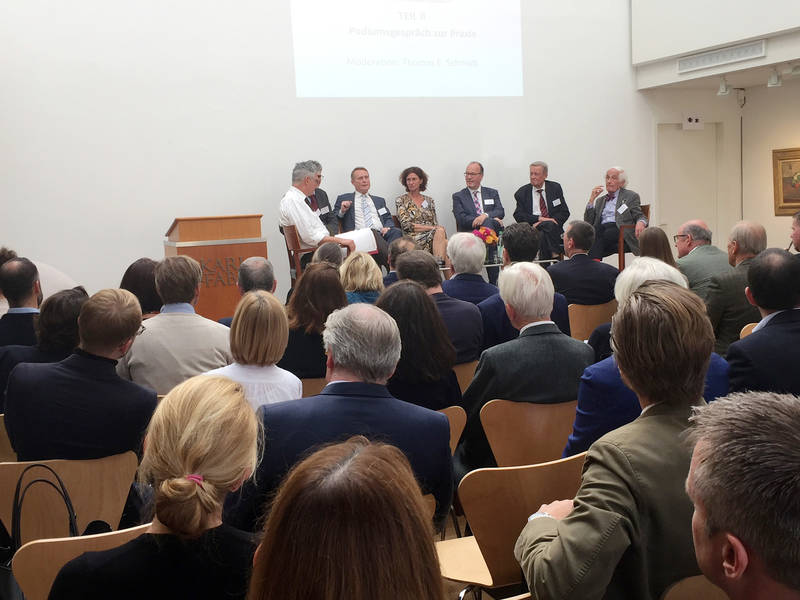
"Fair and just?" The German arts and rare book trade discuss provenance and restitution
This article was first published on the website of the German antiquarian booksellers association, Verband Deutscher Antiquare.
On 14 October 2019, more than 120 art dealers, gallery owners, lawyers, collectors and antiquarians met at the Munich auction house Karl & Faber to shed light on the historically and legally complex topic of Nazi looted art from the point of view of the market players.
A first.
The restitution of Nazi looted art is intensely discussed in public. Since the Washington Declaration in 1998 and the Joint Declaration of 1999, spectacular cases of restitution such as Ernst Ludwig Kirchner's "Berlin Street Scene" (Alfred Hess Collection, restituted 2006) or Paul Klee's "Swamp Carers" (Sophie Lissitzky-Küppers Collection, Comparison 2017) have made a name for themselves. In addition, the Federal Government and the Länder have taken measures, such as the establishment of the German Centre for the Loss of Cultural Assets, based in Magdeburg, and the Lost Art Database, which has been in existence since 2001, most recently the still highly controversial Cultural Assets Protection Act (Kulturgutschutzgesetz). The resulting challenges for dealers, trading in paintings, prints, books and manuscripts, are often relegated to the background. And it is precisely these questions that are of central, even existential importance for the art and antiquarian book market.
This makes it all the more important that the initiative of the Interessengemeinschaft Deutscher Kunsthandel (a joint initiative of, among others, the Bundesverband Deutscher Kunstversteigerer and the Verband Deutscher Antiquare) to organise a conference titled "Fair und gerecht? Restitution und Provenienz im Kunstmarkt". The conference was attended by leading experts of the trade. However, the Federal Government Commissioner for Culture and the Media, Monika Grütter, had neither appeared nor sent a representative - a "devastating" finding for Prof. Dr. Michael Wolfssohn. In his introductory lecture, Wolfssohn, whose family had waived restitution even after a trial lasting more than 12 years, pleaded for a "visualization" of the injustice committed. The art objects seized from Jewish families between 1933 and 1945 as a result of persecution carried a "Kain sign", the art trade and the public were obliged to point this out. "Justice is not enough", he said, "reconciliation" was important.
Legal uncertainty
It became clear in all lectures and plenary discussions how extremely difficult, and in many cases even impossible, it can be to establish law and justice in restitution cases of Nazi looted art almost 75 years after the end of the Nazi regime. A fundamental problem is the legal uncertainty. Even the Washington Declaration, in which 44 states, 12 non-governmental organizations and the Vatican voluntarily committed themselves to locating cultural property confiscated, stolen or seized for persecution during the Nazi era, to finding the rightful owners or their heirs, and to working out a fair and just solution for restitution or compensation, cannot change this. As a "soft law" (Michael Eggert), the Washington Declaration lacks any legal certainty. There are no legally binding guidelines, complained Prof. Dr. Hans-Jürgen Papier, former president of the Federal Constitutional Court and chairman of the so-called Limbach Commission (advisory commission in connection with the restitution of cultural property seized as a result of Nazi persecution). Dr. Papier sees it as the duty of the Federal Government to finally establish legal certainty by means of a moderate law that takes all sides into account. In the concluding panel discussion, there were unmistakable doubts as to whether the Federal Government would take on this task in the foreseeable future. How should the Federal Republic, how should public institutions as legal successors of the Nazi state deal with claims for compensation in the case of a restitution law? What would happen if such a law were to regulate not only the compensation of Nazi looted art, but also of real estate or company shares seized as a result of persecution? Prof. Dr. Hans-Jürgen Hellwig stated in his controversial lecture on "Developments since the Washington Principles" that one probably did not want to risk social peace.
What is "reasonable"?
Hans-Jürgen Hellwig acted as a consultant for the Cultural Property Protection Act and is now regarded as one of its harshest critics. The law had been drafted with "fake facts", because there was no evidence, for example, that Germany was a money-laundering centre for antique dealers. The legislation, he continued, concentrated one-sidedly on the perspective of the then owners of paintings, graphics and other cultural assets, but ignored the situation of today's owners and did not provide any sensible guidelines for a private restitution of looted art. The current owners are only rarely identical with the descendants of the perpetrators. Many works of art were acquired in good faith decades ago by private collectors at auctions or in the trade, without having any information that they might be Nazi looted art. The situation was different for museums and archives that already existed during the Nazi era or were considered legal successors. In this role, they would have the duty to restitute, or at least to bring about a fair and just solution for all those involved in the sense of the Washington Declaration. Other agreements would have to be found for private restitutions.
What is fair and just? This question can only be answered through careful research into the provenance of all objects, stressed Dr. Uwe Hartmann of the German Centre for the Loss of Cultural Assets and Dr. Christian Fuhrmeister of the Central Institute for Art History. If a work of art were to fill a provenance gap, it would be under general suspicion. Hans-Jürgen Hellwig explained that the new law on the protection of cultural property imposed an extended provenance inspection obligation on the art trade, which ultimately meant that a dealer could only bring a work of art onto the market "if he had previously carried out provenance research to the point of economic ruin". According to Hellwig, this was "unconstitutional". Prof. Dr. Peter Raue agreed: Essential aspects of the Cultural Property Protection Act were unconstitutional, and it would be appropriate to correct this in an evaluation process. Provenance research has been part of everyday life for every retailer for decades, especially the larger auction houses have their own departments that deal with it, explained Dr. Rupert Keim of auction house Karl & Faber and Carl-Christof Gebhardt, former employee at Sotheby's Germany. But how much provenance research is economically feasible and reasonable? Art dealers and antiquarian bookshops not only feel largely left to their own devices by the federal government on this question, and are confronted with sometimes unfulfillable demands.
Insufficient - The Lost Art Database
All the more serious was the fact that the Lost Art Database operated by the German Centre for the Loss of Cultural Property had considerable shortcomings. Criticism of the database, which since 2001 has recorded cultural objects that were stolen, transferred or relocated as a result of the Nazi tyranny and the Second World War, was expressed in almost all of the lectures of the day. The information was too general and did not allow exact identification. It also contained works of art that had already been legally sold before 1930. For an entry in the Lost Art database, unproven allegations were sufficient; in the case of unjustified claims, however, the deletion of an entry was almost impossible. This makes these issues all the more fatal in view of the central role played by the Lost Art database in the decision of restitution cases. Carl-Christoph Gebhardt and Dr. Christoph Andreas of the Frankfurt art dealer J. P. Schneider emphasized that the database had "blackmail potential". Dr. Christina Berking, spokeswoman for IG Kunsthandel, put it in a nutshell: collectors are "pushed" by the state, by the public to restitution, "the main means of pressure" is the entry in the Lost Art database.
So what's next?
At the end of a long and insightful day, Christina Berking summarized the precarious situation of the art market. So far, there have been no binding solutions for the restitution of Nazi looted art from private sources. Different standards would have to be applied for the restitution of artworks from museums and archives. Collectors and dealers should finally be included in the Limbach Commission, which had previously only discussed cases of public restitution. The Federal Government and the Länder were obliged to draw up a restitution law that took into account the conditions of the art market and the private acquisition of works of art and included a law on compensation. So far, however, the political will to do so has been missing: "The state gets the required restitution virtually free of charge".
This forces the actors of the art market, who see themselves just as committed to the Washington Declaration as the public institutions, to act on a legally unclear basis and under constantly growing public pressure. The burden of proof can only be clearly clarified in a few cases. According to Dr. Rupert Keim at the auction house Karl & Faber, 11 cases have been restituted in recent years, although the evidence in none of the cases was unequivocal. It was important to make amends, to acknowledge the injustice that had occurred and to establish legal peace.
What do the descendants of the victims and legal owners need, what do today's owners need? How can both be brought to the same table and how can a fair and just solution be found for both? The trade has an important mediating function in this pressing problem. If the state continues to leave the trade alone in its efforts to find solutions, the limits of what is reasonable will soon be reached. Fair and just - this applies to all parties involved in every respect. "We have not found any solutions today, but we have discussed many solutions," summarized Christina Berking. The Munich conference was a strong, clear signal from the art trade to face up to the responsibility of history and to tackle the resulting problems together. That gives hope for the future.
Text and Images: Dr. Barbara van Benthem, VDA

"Hardly anyone finds their way into this business by chance"
Dear Mr. Schneebeli, congratulations on your election as VEBUKU/SLACES President. Could you please introduce yourself to us? What is your background, how did you enter the rare book trade, and what areas do you specialise in?
Thank you very much for congratulating me on my election. I hope that I will be able to lead the association as successfully as my predecessors did.
I believe that hardly anyone finds their way into this business by chance. Ever since my earliest childhood, books, bookshelves, and libraries have held a great fascination for me. This fascination never waned, even during my early career as an architect and later as a graphic designer with my own company. Books are still a source of wonderful discoveries and inspiration for me today. And, to be honest, my desire to pursue this passion professionally outweighed all of my (today's) colleagues' reservations and warnings. What has changed compared to my former role as a customer is that I now have the privilege of sharing these wonderful discoveries and inspirations with many customers and learning new things in the process.
What hasn't changed, however, is my love of science, art, crafts, and art history.
2. What motivated you to take on this time-consuming role? How do you see the work of the Swiss association developing in the coming years?
To get straight to the point: VEBUKU/SLACES is a small association. Sooner or later, you will likely be asked to take on a position on the association's board. However, membership in an association also means being committed to its further development when the opportunity arises. Fortunately, my predecessor, Dr. Peter Bichsel, left me a well-organized association with healthy finances. As president, I will initially focus on continuing Peter's successful work. This includes supporting our members and developing a viable trade fair concept for the Zurich Rare Book Fair. In the future, however, the board will also need to focus more on the legal and economic aspects of the rare book trade and provide support to our members in these areas.
3. What are VEBUKU’s plans for the Zurich Rare Book Fair next year?
It is no secret that trade fairs in general, and antiquarian book fairs in particular, are experiencing a crisis. The internet, as a constantly available exhibition venue, is increasingly replacing the adventure of visiting a fair in person. Against this backdrop, we had to develop a new concept with a significantly reduced budget for this year's March fair. Since the new concept has been successful, we will plan the next Zurich Rare Book Fair on this basis as well. The next fair will take place at the beginning of March 2026.
4. How would you describe the Swiss rare book trade today? Where are your members based? Where does the trade mainly happen? Have things changed in the last few years, and are there other significant developments that might compare to the international market or be uniquely Swiss?
I don't think the Swiss market differs significantly from other markets. Customers have become more international, and we are also struggling with supply exceeding demand. In Switzerland, topics such as Helvetica, alpinism, and tourism continue to sell well. Overall, however, I see a trend of booksellers expanding their traditional range to include different kinds of artwork. This trend may be assessed differently depending on the region and the dealer's customer base. One thing that unites us all, though, is our concern about the increasing trade barriers imposed by the EU and, more recently, the US, as well as the devaluation of the euro and US dollar against the Swiss franc. There is no indication that these challenges will diminish in the future. As booksellers in Switzerland, as well as the association, we will have to address these developments more intensely in the future.
5. When you're not working in your shop or answering VEBUKU emails, where might we find you? Do you have a favourite place you’d recommend to this community of booklovers?
It's a question with many possible answers. But if I may make a suggestion, it might be this: When I was a young professional, I worked for an architecture firm that was working on a project in Zurich for the renowned Italian designer Ettore Sottsass. Once, at a meeting, my boss asked Ettore if he could visit him in Milan, and if he would be willing to show his work. Ettore's eyes widened instantly and he replied indignantly: “My work? No! If you visit me in Milan, we'll go out to dinner! That's much more interesting than my work.” I still remember that moment today like it was yesterday. If I had to make a recommendation, though, it would be that there's no better place to learn about books and everything about them than over a good meal with good company.
Mr. Schneebeli, we thank you for this interview.
To contact Georg Schneebeli, please click >> HERE
For more information about VEBUKU/SLACES, the Swiss antiquarian booksellers' association, please go >> HERE
To visit or exhibit at the Zurich Rare Book Fair, please find more information >> HERE

"How can we ignore virtual fairs with numbers like these?"
Earlier this year, the ABA announced to run virtual fairs on a quarterly basis and has just finished its 3rd virtual fair of FIRSTS ONLINE. Why these additional virtual events and what is your feedback after running three fairs?
Virtual fairs including Firsts Online have provided a vital lifeline for many booksellers to showcase their stock to an international audience when many of their physical bookshops were shut during the pandemic. As mentioned, while virtual book fairs will never replace the in-person experience, Firsts Online has allowed our (ABA) members and colleagues to reach new and existing customers, trade between booksellers, and create awareness of their businesses.
We have worked hard to create a user-friendly experience for visitors to our Firsts Online website with improvements being made after each of the three fairs. Feedback from ABA members and exhibitors has been increasingly positive about the platform, demonstrating that we have a great online tool moving into the new year. We are making further adjustments ahead of the winter edition of Firsts Online fair running 18-23 February 2021.
The feedback from Firsts Online exhibitors has been that the we are getting mostly professional buyers, so dealers, librarians and the more committed collectors. The challenge moving forward into the new year will be to try to attract more new customers and a consumer audience to online book fairs.
Although we do not have a completely accurate count of business generated, we believe the June fair brought nearly £1m of trade, September over £500,000 and November £750,000. The majority of the exhibitors did some sort of business either during or after the fair. The top sales include several over £100,000. These numbers I think are significant, especially considering a stand only costs £150. For the future, how can we ignore Virtual Fairs with numbers like these?
What potential do you see in virtual fairs alongside physical fairs? Will you keep the virtual fairs running when physical fairs can take place again?
While we are all hopeful in-person book fairs will return in 2021, there is still a benefit of running these low-cost online book fairs for those who might not be able to travel abroad however do still wish to participate. At the moment, we are working with other ILAB associations to create a cohesive physical and online fair schedule for 2021 and ensure booksellers can continue to participate in book fairs in one form or another.
As to how the physical and virtual work together needs to be thought through carefully. You don’t want virtual cannibalising the physical. Also there is a matter of organisational resources. Running any fair is a serious amount of work, running two side by side will be a challenge!
Do you feel virtual fairs have changed the booksellers’ selling behaviour? Can you see long-term effects?
The concentrated nature of these events, only allowing up to 20 items forces the dealers to be more selective and thoughtful to what they are offering. I have overall been very impressed with the quality of material offered at Firsts London. It might make some more thoughtful how they present themselves at all fairs in the future.
We all want the fairs to be part of our life again. FIRSTS London will move to the Saatchi Gallery in May, an exciting new venture for the ABA! What can booksellers expect?
We are thrilled to be hosting Firsts London at Saatchi Gallery from 21-23 May 2021, where we expect to call the venue home for the foreseeable future. The decision to move to Saatchi Gallery followed overwhelming feedback from ABA members and exhibitors to secure a higher-profile location for the fair. We are very positive that the gallery's museum-quality spaces and large cultural following will offer a superior platform for exhibitors to connect with their customers. Due to the enduring effects of the covid-19 pandemic, we are working to ensure the latest health and safety guidelines will be met and the fair is safe for both our exhibitors and visitors.

"I believe all new booksellers should have such a resource"
Liam, for all those who don't know you yet, could you please introduce yourself a little? Where are you based and what do you deal in?
We are based in Ottawa, Ontario in the capital city of Canada. We specialize in books on the Arctic, and early books about Canada, and early North American history.
Your father, Patrick, set up the shop (and as we heard, he is still actively cataloguing books in the early hours of the morning). How has the business evolved over time? What does it mean to take over as a 2nd generation bookseller?
My father started the business in 1969, and tells stories of a different era, before credit cards, online bookselling, and a time when institutions were competitively trying to buy books. Much has changed, but ultimately good books still sell.
How would you describe the rare book trade in Canada today?
For a country of only about 41 million people, I’d say it’s reasonably stable. There is little to no government support for antiquarian books in Canada. Our National Library seemingly has no budget for acquisitions, and universities have been fighting budget cuts for two decades. I do believe that the trade continues to grow because of private collectors.
Ottawa is not always the first place people think of for rare books - what is the scene like there? Has living and working in Ottawa shaped your interests or the kind of material you specialize in?
I’ve always been interested in Canadiana and our local history since I started school. So many of the early explorers and fur traders travelled right through our city and past our cottage, and I’ve always been fascinated that Champlain and his friends paddled up the river that I see every day and enjoy all summer.
What’s the most memorable or surprising book you’ve handled recently?
Last year, we were able to acquire a first edition of Freud’s "Die Traumdeutung", which was exciting to buy. It’s exciting to have such a landmark book.
In October 2024, you joined the ILAB Committee and have now taken over the role as Education Coordinator, in particular handling scholarships that ILAB awards and overseeing ILAB's Mentoring Programme. Why did you choose this role?
I am really excited to take on this role for ILAB. I was fortunate to be born into the trade, and start working part-time when I was 12, and since that day I’ve always had a mentor, my father. Right from the start, I wasn’t learning by trial and error, but was mentored by someone who learned much of it on his own, and with the help of a few dealers. I think that’s been a great benefit to me. I believe all new booksellers should have such a resource, and it’s my hope that I can grow these two programs. Also, if I could go back 25 years, I would have gone to CABS or YABS. I know several booksellers who’ve gone, and they rave about it.
And finally, when you’re not surrounded by beautiful books, where do we find you?
If I’m not at work, I’m likely at the cottage with partner Megan, from sun to snow. Everyone needs an escape from the city!
To contact Liam, please find all his details HERE.
For all information about ILAB's Mentoring Programme and various educational initiatives of the rare book trade, please find more information HERE or contact Liam McGahern or the ILAB Secretariat

